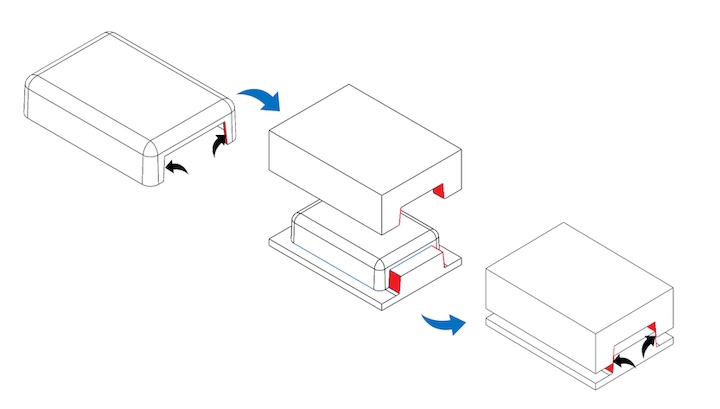Time to read: 2 min
The Challenge: Stopping Flash Before It Starts
Flash is excess plastic that forms on the surface of injection molded parts. Some amount of flashing is expected during plastic injection molding, but an excessive amount of flash can detract from a part’s surface finish and interfere with product assembly. The causes of flash are numerous and include problems with tooling and processing. Yet, part designers who follow best practices can reduce or avoid this common type of injection molding defect.

The Solution: Adding Proper Draft, Especially at Shut-Off Locations
Draft is an angle, or taper, that designers apply to part walls or features that are perpendicular to the line of draw and starts at the parting line. Without enough draft, injection molded parts won’t eject cleanly and are prone to flash. If there are mold surfaces that produce a shut-off, an area where there isn’t any plastic, designers can add more draft to reduce or avoid injection molding flash.
For example, the sides of the window cut-outs in the molded part below will form a shut-off in the core and cavity. By applying more than 3° of draft, however, a part designer can reduce the chance of flashing in the injected molded part. As the tooling comes together, so do the angled surfaces of the cavity and core. Because there’s better alignment, there’s a reduced likelihood of flashing.

The Impact: Better Quality, Lower Costs, Amazing Speeds
Troubleshooting injection molding flash or removing it during secondary processing adds costs and extends project timetables. By adding extra draft, especially at shut-off locations, part designers can avoid the costs associated with these activities. Designers can also avoid potential delays in new product introduction and get to market faster.
At Fictiv, we have the resources, know-how, and manufacturing network to deliver the injection molded parts that you need, and at amazing speeds. Learn more about our plastic injection molding capabilities when you create an account. Along with your quote, you’ll receive expert design for manufacturing (DFM) feedback and guidance to ensure you get great outcomes.









